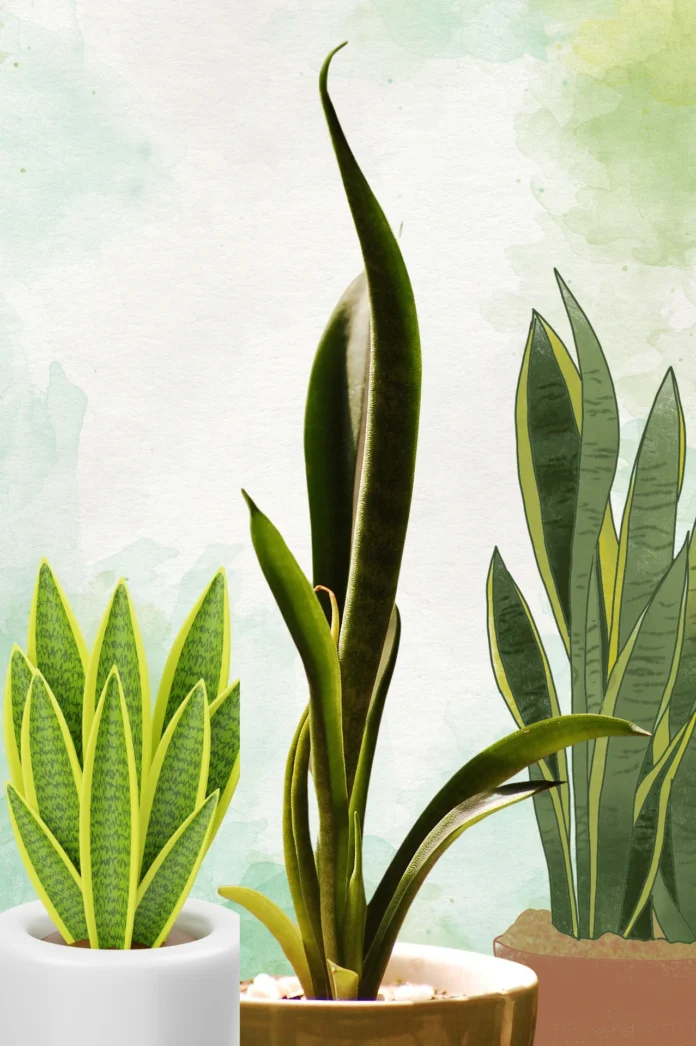The snake plant (Sansevieria trifasciata) is commonly known as mother-in-law’s tongue. It’s a popular houseplant that offers striking foliage, air-purifying qualities, and is rather easy to propagate. This gives plant enthusiasts ample opportunity to spread their collection in a very hassle-free manner. In this tutorial, we’re going to discuss different ways of how to propagate snake plants. Each one of these is described in detail for you to succeed at growing healthy new plants.

Why Propagate Snake Plants?
Propagating snake plants is not only cheap but also fulfilling. In return, you will:
- Collect more of these babies.
- Share some with your family and friends.
- Revive the old overgrown or broken plants.
- Give fresh greenery for different areas around your home.
- Tools and Materials Needed
Collect the following in advance:
- One healthy mature snake plant
- A clean pair of scissors or sharp pruning shears
- Clean, sterile water pot or a clean pot with good-draining soil.
- Rooting hormone (optional).
- Water or potting mix.
Key Tip: Always sterilize your tools to prevent infections that could harm the plant.
Propagate Snake Plants
- Propagation Through Division
This is the easiest and most successful way of growing snake plants. The process here involves dividing the plant into pieces with their individual roots and leaves.
Steps for Dividing Propagation:
Remove the Plant: Take out the snake plant from the pot, but this time make sure to remove some of the soil around its roots.
Inspect the Root System: Identify natural divisions in the rhizomes (horizontal stems that grow underground).
Separate the Sections: Use your hands or a sterilized knife to divide the plant into smaller sections, ensuring each section has roots attached.
Repot the Divisions: Plant each section in a pot filled with fresh, well-draining soil.
Water Sparingly: Water the newly potted divisions lightly to encourage root establishment.
- Propagation Through Leaf Cuttings
This technique requires cutting leaves into pieces and rooting them in soil or water. It is slower than division but is an excellent way to produce many plants.
How to Propagate Using Leaf Cuttings:
- Select a Healthy Leaf: Pick a mature, healthy leaf from your snake plant.
- Cut the Leaf into Segments: Cut the leaf into 3-4 inch pieces, making sure that each piece has a straight bottom cut.
- Optional Rooting Hormone: Submerge the bottom base of each cutting into rooting hormone to ensure more rapid growth.
- Place in Water or Soil:
Water:
Insert the cutting end down into a glass containing water. Change the water weekly.
Soil:
Plant the cuttings about an inch in the well-draining soil.
Observation of Growth: After 4-6 weeks, roots will start growing. Roots that have formed may be transferred to the soil from water.
- Rhizome Cuttings
Snake plants grow from rhizomes that can be cut and replanted to form new plants.
How to Propagate Using Rhizome Cuttings
- Find a Rhizome: Look for the thick horizontal root that is kept below the soil.
- Cut the Rhizome: With the sterilized knife, separate the rhizome into segments making sure that each segment is seen with a growth node.
- Plant the Rhizomes: Plant the cut rhizome segments under the soil but with the growth node facing upwards.
- Care for the Cuttings: Water lightly and place the pot in a warm, bright location. New shoots will emerge in a few weeks.
- Water Propagation for Beginners
Water propagation is an easy technique suited for beginners. It lets you see roots grow, which is amazing and fulfilling at the same time.
Steps for Water Propagation:
- Prepare the Leaf Cuttings: Follow the same steps to prepare the leaf cuttings.
- Place in Water: Place the cut end of each leaf in a glass of water so that no part of the leaf above the waterline is wet.
- Change the Water Periodically: Change the water every 5-7 days to keep it fresh.
- Transfer to Soil: When the roots are 1-2 inches long, transfer the cutting to a pot with soil to continue its growth.
Best Practices for Successful Propagation
- Use Proper Lighting: Place your propagated plants in bright, indirect light. Avoid direct sunlight, which can scorch the leaves.
- Choose the Right Soil: Snake plants thrive in well-draining soil. Consider using a cactus or succulent mix.
- Water Sparingly: Overwatering is the primary cause of failure in propagation. Water only when the soil is dry.
- Be Patient: Some techniques like leaf cuttings will take much more time. Allow roots and new growth to develop.
General Mistakes to Avoid
Incorrect Cuts on Leaf Sections: Ensure the sections are cut in the right direction, as this would reverse the orientation, thus preventing rooting.
Overwatered Leaves: Too much water causes root rot, effectively stopping propagation.
Unsterilized Equipment: Filthy tools introduce unwanted bacteria to the plant.
Frequently Asked Questions
- How long does it take to propagate a snake plant?
Propagation times are different for the different methods used. Leaf cuttings take a period of about 4-6 weeks to show roots, but with division, one would see results within an instant.
- Can I propagate my snake plant during winter?
Spring and summer would be the best seasons to propagate when the plant is actively growing, but with good care, even during winter it can be successfully propagated.
- Why aren’t my cuttings rooting?
Make sure to provide ideal light, temperature, and moisture levels. Observe for signs of rot or disease; if necessary, change your methods.
Conclusion
Propagation of snake plants is an easy and rewarding procedure that can enrich your interior space. Snake plant propagation can be carried out through division or by leaf and rhizome cuttings, allowing you to multiply your variety of plants. Above, there’s the step-by-step process; follow these to end up with a bright collection of thriving snake plants.










